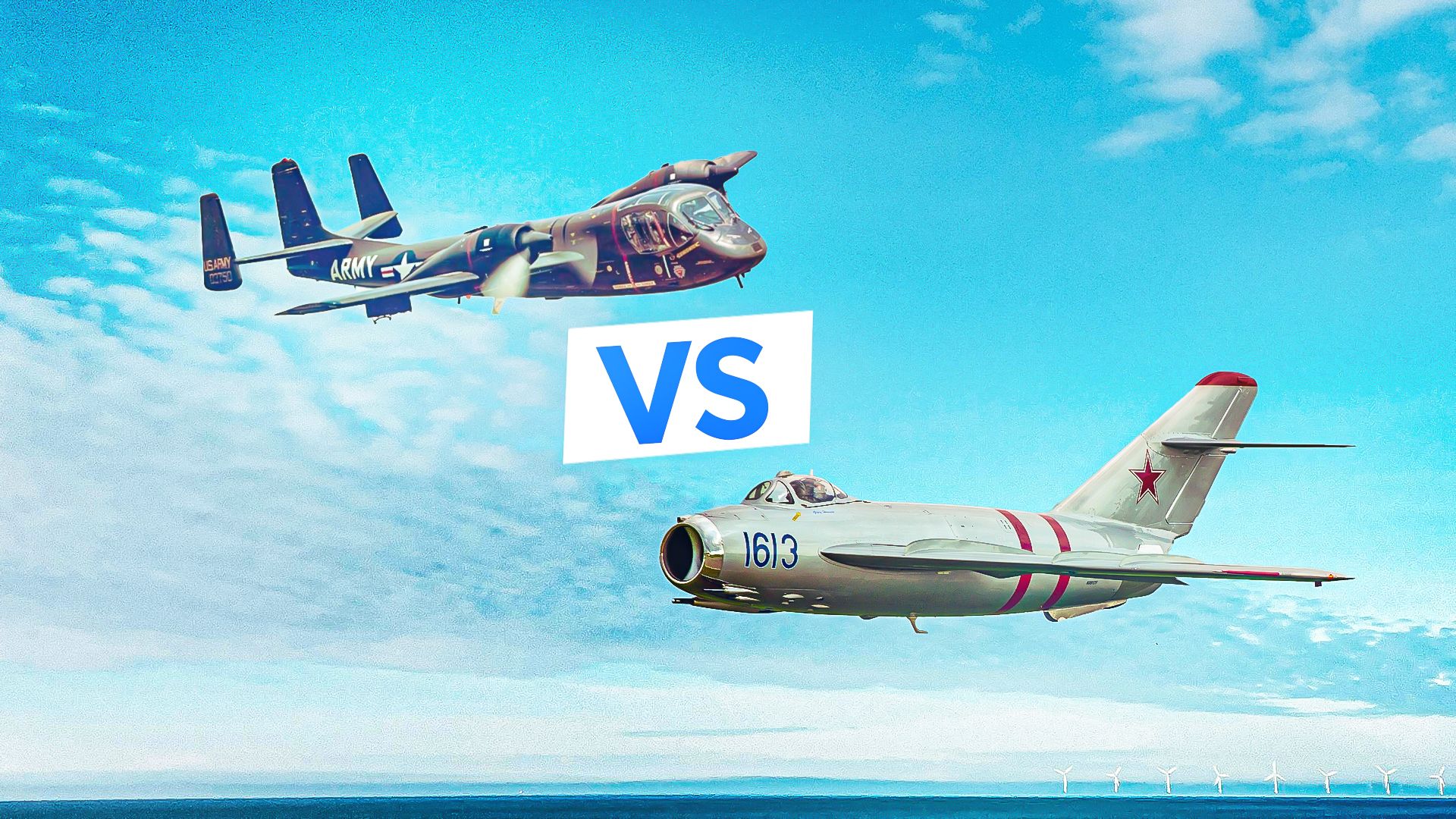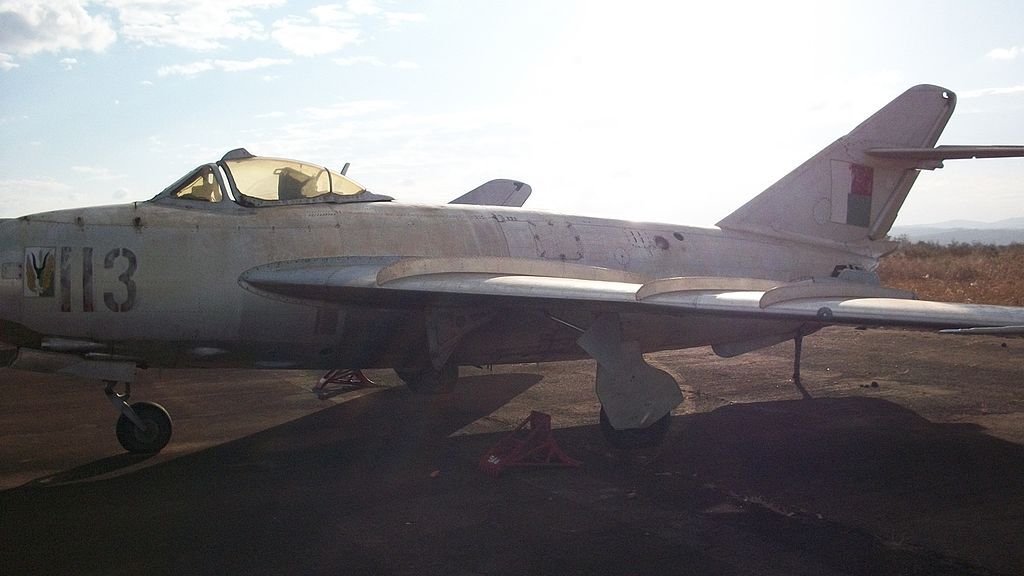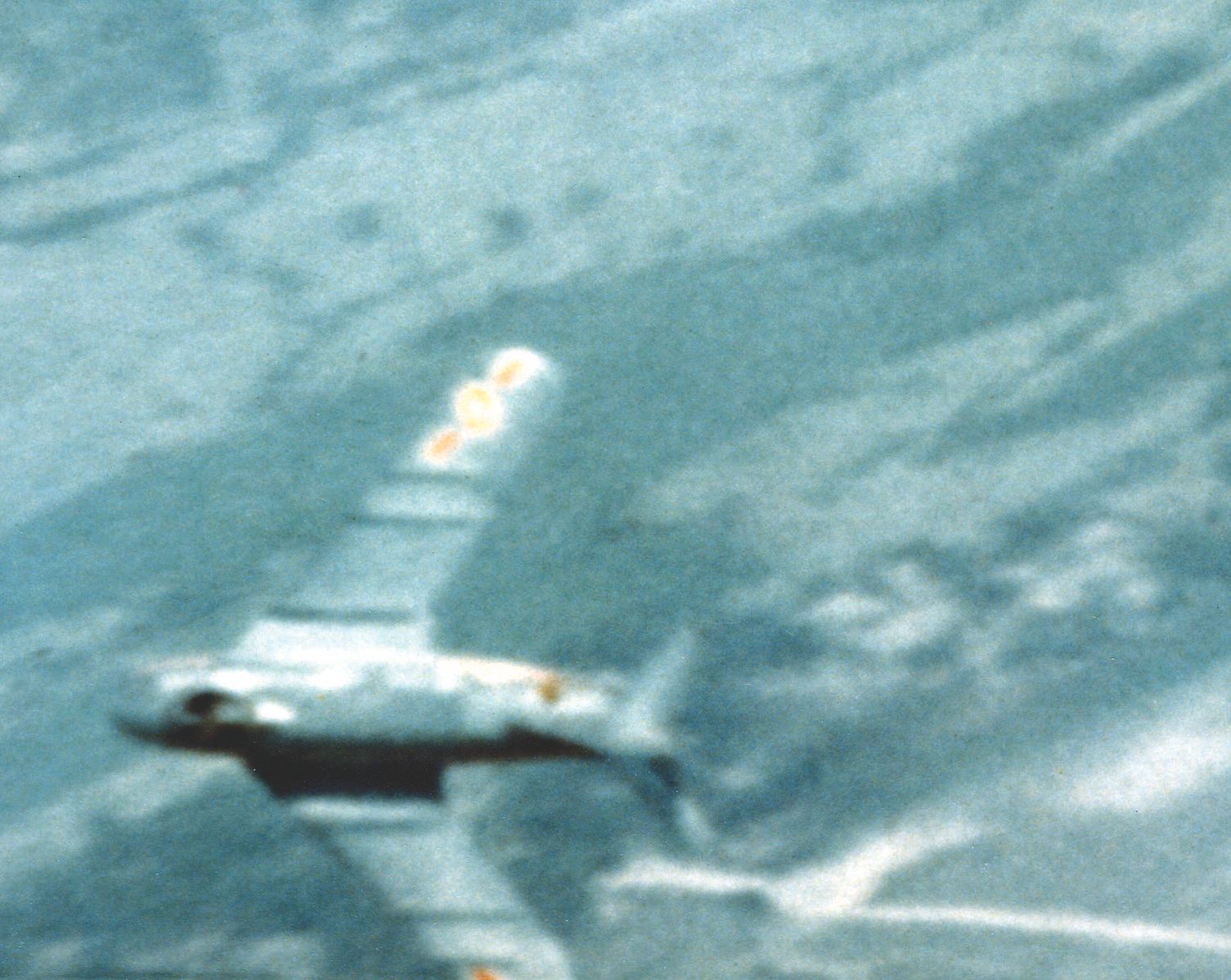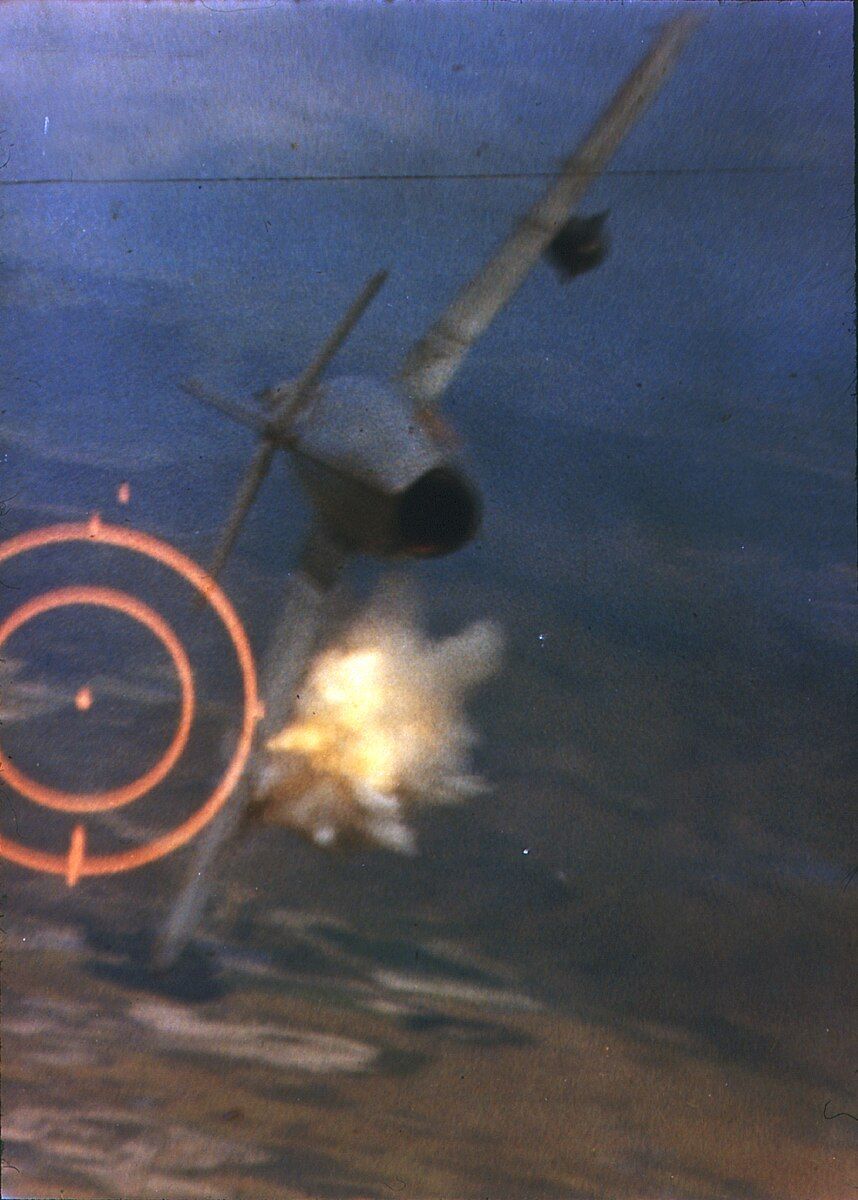Summary
- The US Army Mohawk downed a Soviet-designed MiG-17 in the Vietnam War, an unlikely air combat success story.
- The OV-1 Mohawk had versatile specifications, notably used for ground missions, not dogfights.
- The unlikely aerial victory was recognized nearly four decades later.
Upon seeing/hearing the word “Mohawk,” most people will associate it with one or two definitions:
- The Native American tribe Iroquoian-speaking Indigenous people of North America, with communities in southeastern Canada and northern New York State, primarily around Lake Ontario and St. Lawrence River.
- The hairstyle that was supposedly inspired by the tribe, mainly associated with the 1980s punk rock community and actor Mr. T (best known as Clubber Lang in Rocky III, B.A. Baracus in The A-Team, and Hulk Hogan’s tag team partner during the main event of the very first WrestleMania.
Given the facts that (1) the Mohawks were a warrior tribe and (2) the heroes of The A-Team were Vietnam veterans, perhaps its apropos that there was an American warbird during the Vietnam War bearing the Mohawk moniker. Now, mind you, the Grumman OV-1 Mohawk, though armed, was a twin-engine turboprop designed for battlefield surveillance and light strike missions against ground targets, *not* mixing it up in air-to-air dogfights against enemy jet fighters such as MiGs. Yet, on at least one occasion, a Mohawk managed to kill a MiG-17 “Fresco” jet fighter. Simple Flying now takes a deeper dive into this unlikely story.
The unlikely victor: OV-1 Mohawk early history and specifications
The Grumman OV-1 made its maiden flight on April 14, 1959, and entered into operational service with the US Army that October.
Yes, you read correctly – the US Army, not the US Air Force; the latter service rejected the Mohawk, and the Army was still using fixed-wing combat aircraft for a couple of decades after the USAF broke away as a separate and independent branch of service.
The OV-1 had the following specifications:
|
Crew: |
2 (sitting in side-by-side configuration) |
|
Fuselage Length: |
41 ft 0 in (12.50 m) |
|
Wingspan: |
48 ft 0 in (14.63 m) |
|
Height: |
12 ft 8 in (3.86 m) |
|
Empty Weight: |
12,054 lb (5,468 kg) |
|
Max Takeoff Weight: |
18,109 lb (8,214 kg) |
|
Powerplant: |
2 × Lycoming T53-L-701 turboprops, 1,400 shp (1,000 kW) each |
|
Max Airspeed: |
305 mph (491 km/h, 265 kn) |
|
Range: |
944 mi (1,519 km, 820 nmi) with external tanks |
|
Service Ceiling: |
25,000 ft (7,600 m) |
|
Armament: |
|
380 OV-1s were produced between 1959 and 1970. Today, roughly 14 airworthy specimens survive along with roughly 31 static display airframes at various museums and airfields; nearly all of them are located Stateside, with the lone exception being Serial No. 68-15932, a static display OV-1D at the Argentine Army Museum (Museo Histórico del Ejército) in Buenos Aires, Argentina
The unlikely vanquished: MiG-17 “Fresco” early history and specifications
The Mikoyan-Gurevich MiG-17 (NATO reporting name “Fresco”) made it maiden flight on January 14, 1950, and entered operational service with the Soviet Air Forces in October 1952. In February 1964, the Soviet Union began “gifting” MiG-17s to their “familial socialist brethren” (so to speak) in the Vietnam People’s Air Force (VPAF; Không quân nhân dân Việt Nam [KQNDVN]), i.e. the North Vietnamese Air Force.
The MiG-17 had the following specifications:
|
Crew: |
1 |
|
Fuselage Length: |
11.264 m (36 ft 11 in) |
|
Wingspan: |
9.628 m (31 ft 7 in) |
|
Height: |
3.8 m (12 ft 6 in) |
|
Empty Weight: |
3,919 kg (8,640 lb) |
|
Max Takoeoff Weight: |
6,069 kg (13,380 lb) |
|
Powerplant: |
1 × Klimov VK-1F afterburning centrifugal-flow turbojet engine, 26.5 kN (6,000 lbf) thrust dry, 33.8 kN (7,600 lbf) with afterburner |
|
Max Airspeed: |
|
|
Range: |
2,020 km (1,260 mi, 1,090 NM) at 12,000 m (39,000 ft) with 2 × 400 L (110 US gal; 88 imp gal) drop-tanks |
|
Service Ceiling: |
16,600 m (54,500 ft) |
|
Armament: |
|
In short, the “Fresco” had clear advantages over the Mohawk in speed, engine power, range, altitude, and air-to-air armament, so on paper, this should’ve been a total mismatch. Yet things don’t always work out in real life as they do on paper.
An estimated 10,649 MiG-17s were built. Incredibly, the aged warbird still remains in service with the Democratic Republic of the Congo, Guinea, Mali, Madagascar, Sudan, and Tanzania, and by extension through the Chinese-made Shenyang J-5 variant, North Korea. There is also a static display airframe bearing North Vietnamese markings at the National Museum of the Mighty Eighth Air Force in Pooler, Georgia (USA, that is, not the former Soviet Republic).
How, when, and where it happened
The details of this story (and the inspiration for this article) come from the following YouTube video from the Not A Pound For Air To Ground channel (with additional information provided by the ever-knowledgeable Dario Leone of The Aviation Geek Club):
One fine morning in February 1968 (coincidentally just a couple of weeks after the Tet Offensive), a two-ship formation of OV-1As from the 131st Aviation Company, under the command of flight lead Capt. Ken Lee, was flying at 2000 ft (609.6 m) above the Ashau Valley, one of two strongholds for the North Vietnamese Army (NVA) in the Republic of Vietnam (RVN) AKA South Vietnam. Signore Leone picks up the story from there:
“Suddenly, as explained by Wayne Mutza in his book U.S. Army Aviation in Vietnam, Lee felt his airplane taking hits and he immediately turned to right when his wingman from half a mile behind his tale, shouted at him: ‘You got a MiG behind you!’ Lee levelled his wings and a MiG-17 passed at 275 knots on his left, pulling out of its dive two hundred feet [60.96 m] below him and turning back to attack the two Mohawks again. Lee understood that his only chance to avoid being shooting [sic] down by the MiG would have been attacking it.”
“The MiG pilot had made a major mistake in slowing down to make his attack and Lee fired 38 rockets in two shots, with four of them hitting on the MiG. Moreover, Lee hit the enemy fighter also with many bullets of his machine gun ‘I put about 100 rounds of .50-caliber into him – I could see the tracers going into the fuselage. Hitting his engine killed his power.’” Since the MiG was climbing when Lee opened fire, they entered into a cloud bank. Lee pulled out of the clouds to the right, and saw the MiG coming out about three to five seconds later. The aircraft right wing was low and his nose was pitched over, with orange flames.”
The MiG disappeared from view, and circumstances were such that Capt. Lee could not have confirmed his kill without slamming into the hillside, and he didn’t see the “Fresco” crash.
The above photo is not from the actual incident of this story, but rather gun camera footage of a MiG-17 being downed by an F-105 Thunderchief.
Upon returning the Mohawks’ safe return to base (RTB), the petty office politics and parochialism that oftentimes afflict inter-service rivalries reared their ugly heads:
“Once they returned to Phu Bai air base Lee discovered many bullet holes in the tail and in the aft fuselage of his aircraft, but it was ordered to him and to his wingman not to talk to anyone about Lee probable MiG kill. The Army in fact feared that the U.S. Air Force (USAF) would have forced them to either disarm the Mohawks or even turn them over to the USAF, because the Air Force had reserved shooting down MiGs as their exclusive domain.”
However, fast-forward a few weeks, and Capt. Lee found himself meeting at the Officers Club of Ubon Royal Thai Air Force (RTAF) Base with two legendary USAF fighter pilots, then-Colonels Robin Olds (later Brig. Gen.) and Daniel “Chappie” James Jr. (who later became the first African American to reach the rank of four-star general in the US Armed Forces).
The two good Cols informed Capt. Lee that his shootdown of the MiG was indeed confirmed but wouldn’t specify *how* the USAF types were able to obtain this verification. In Olds’s own words to the Army Captain:
“‘We know things you guys don’t and will never find out.’”
Ken Lee finally received official credit for his aerial victory in 2007. He remains the only US Army pilot (as opposed to Air Force, Navy, and Marine Corps) pilot ever to be credited with bagging a MiG.




